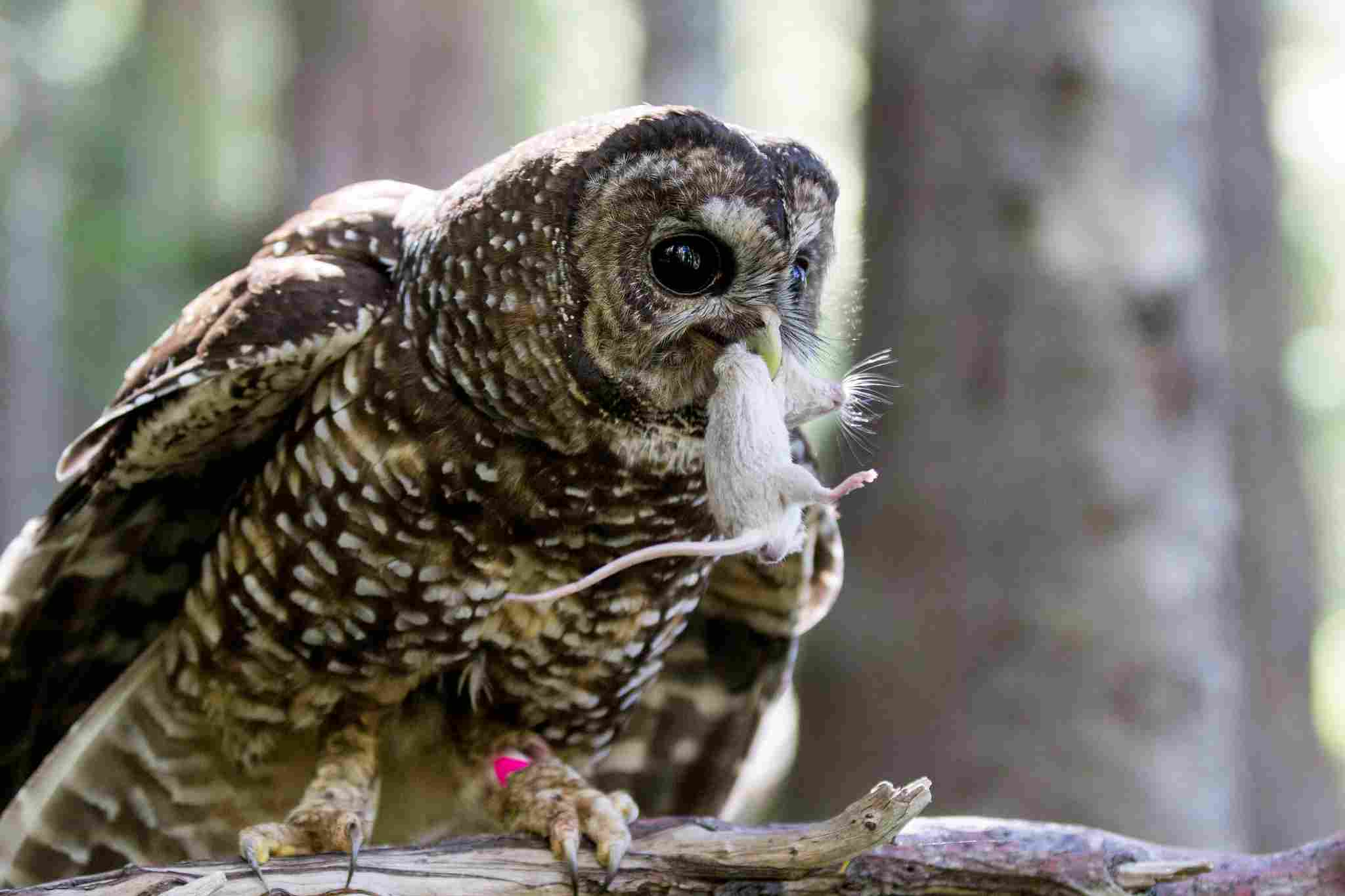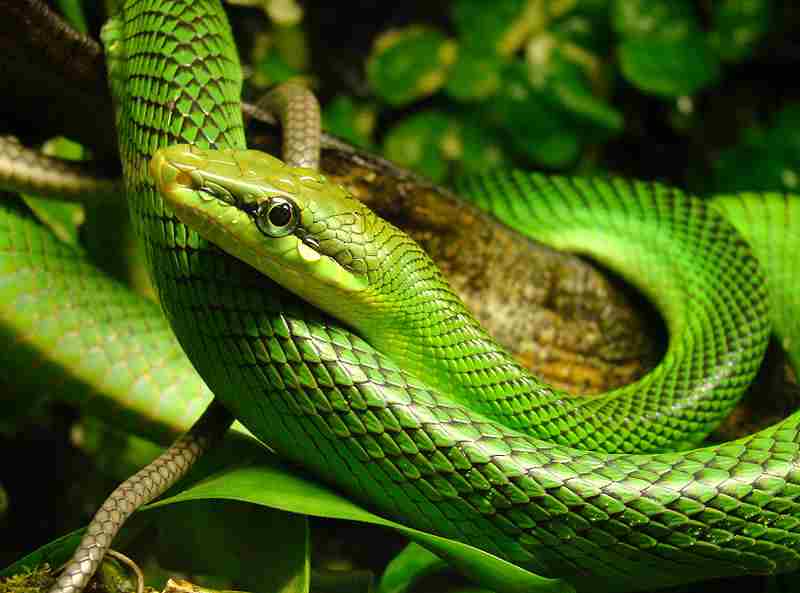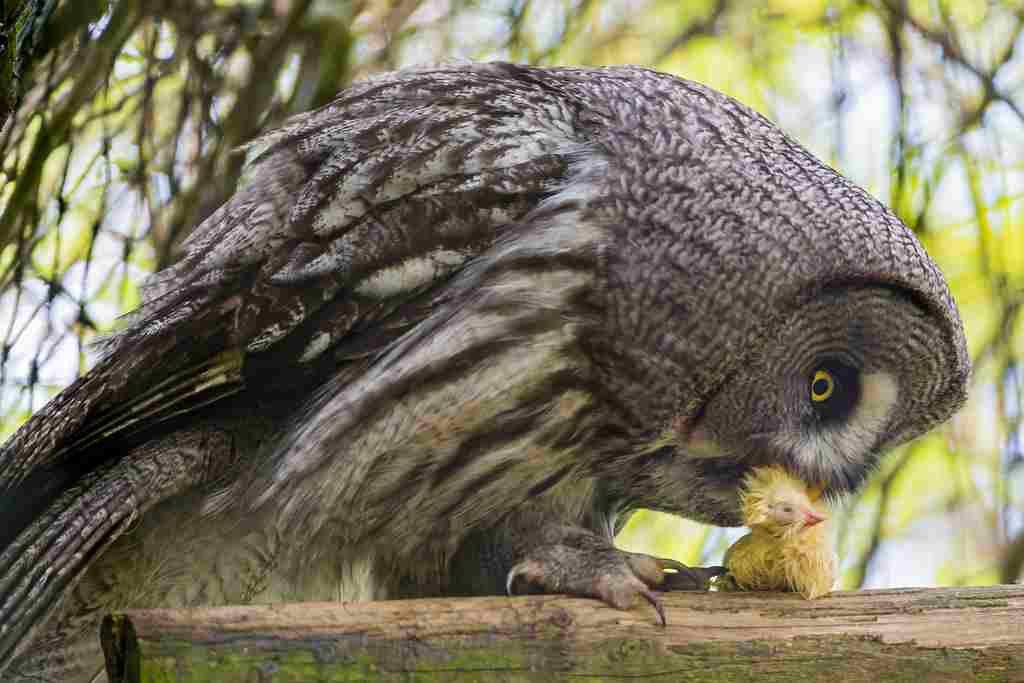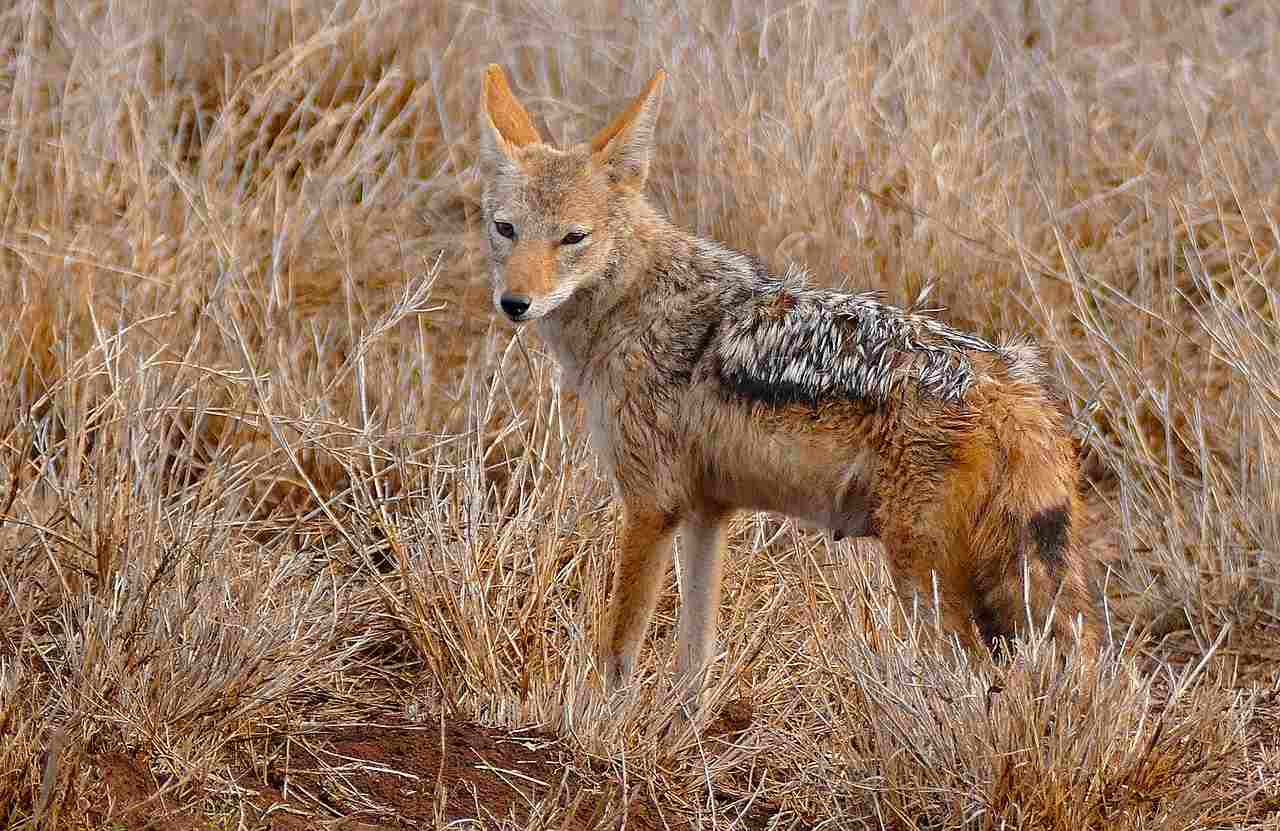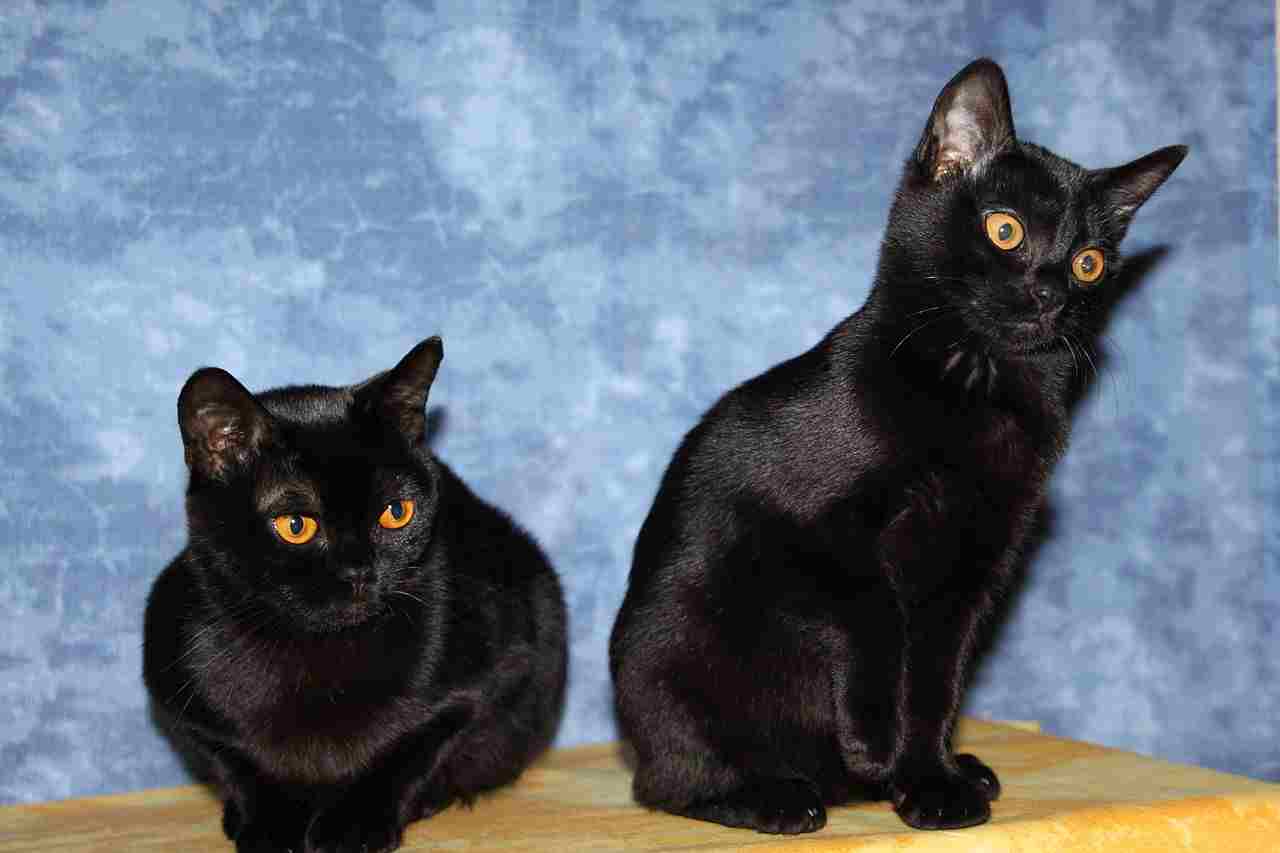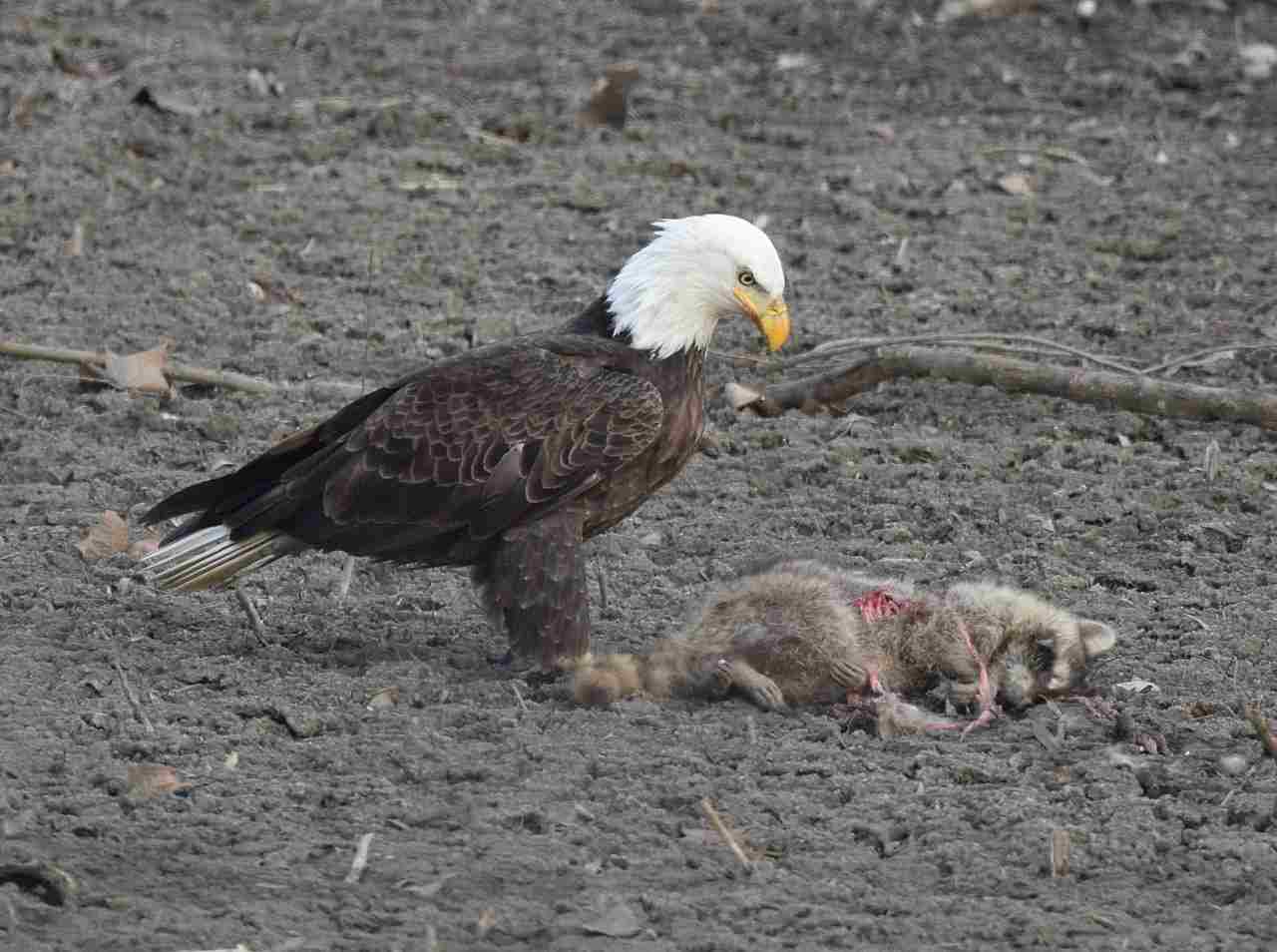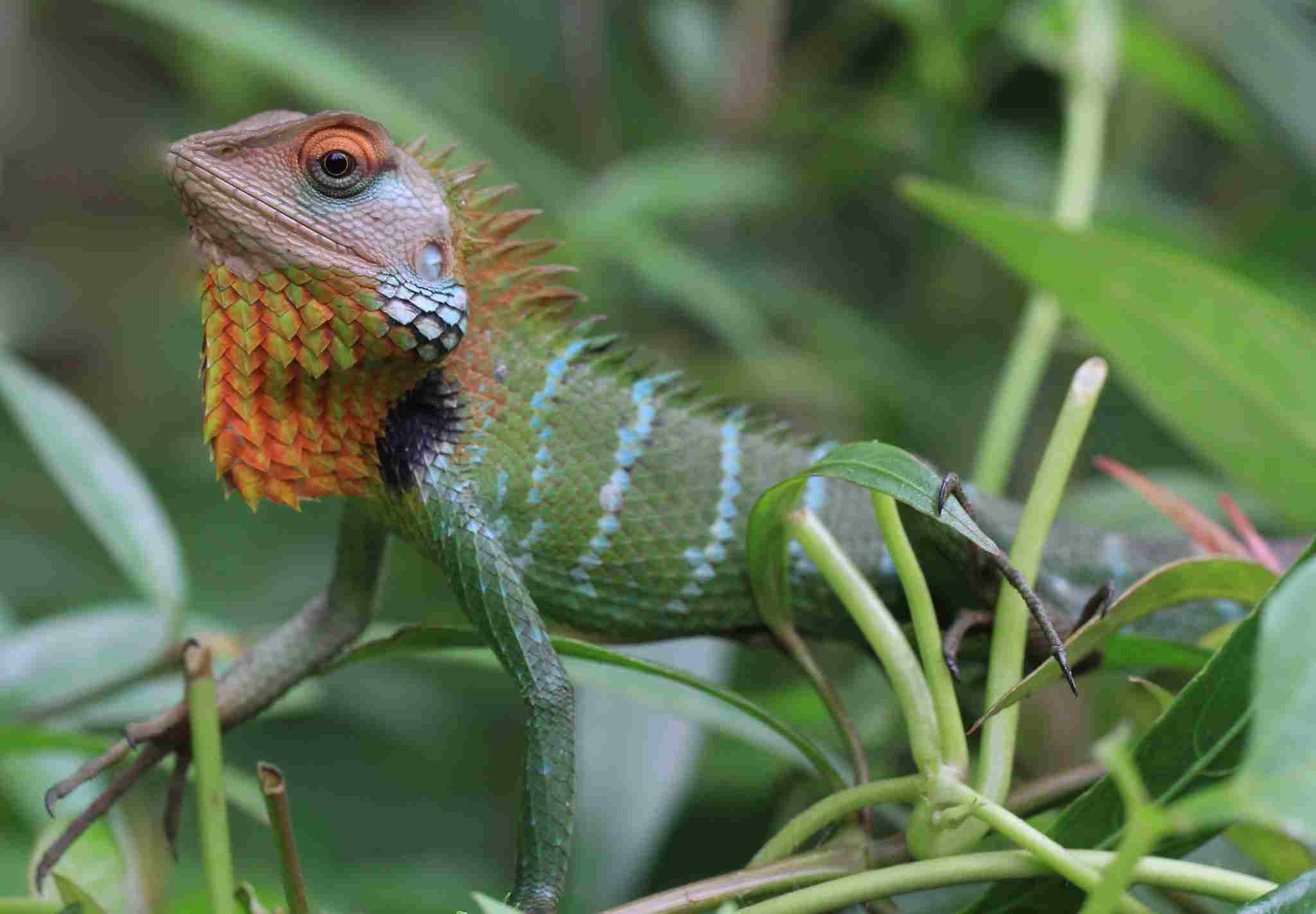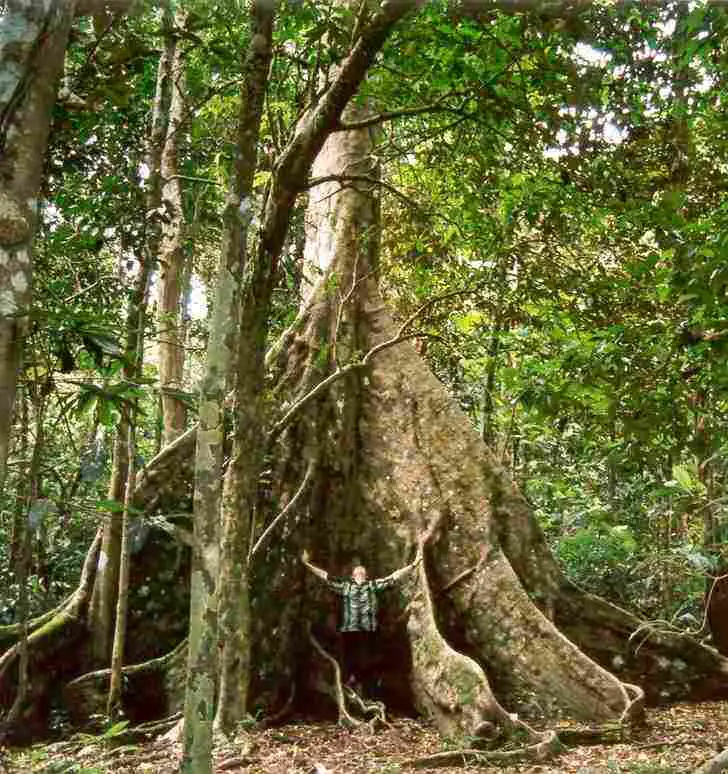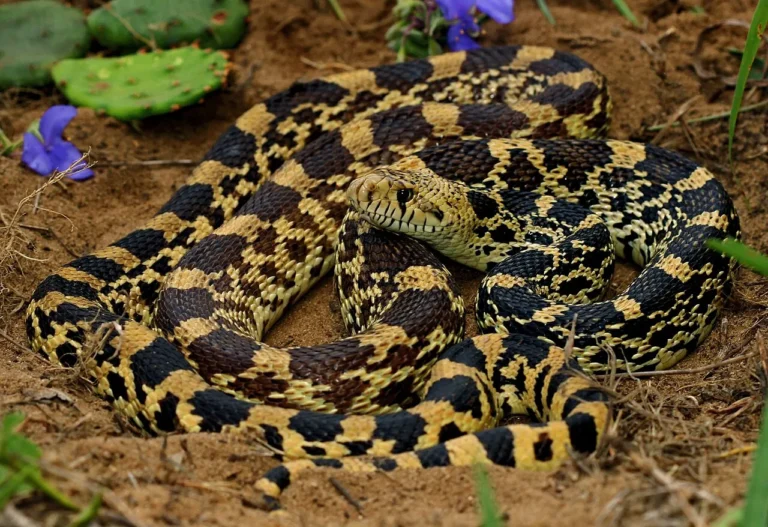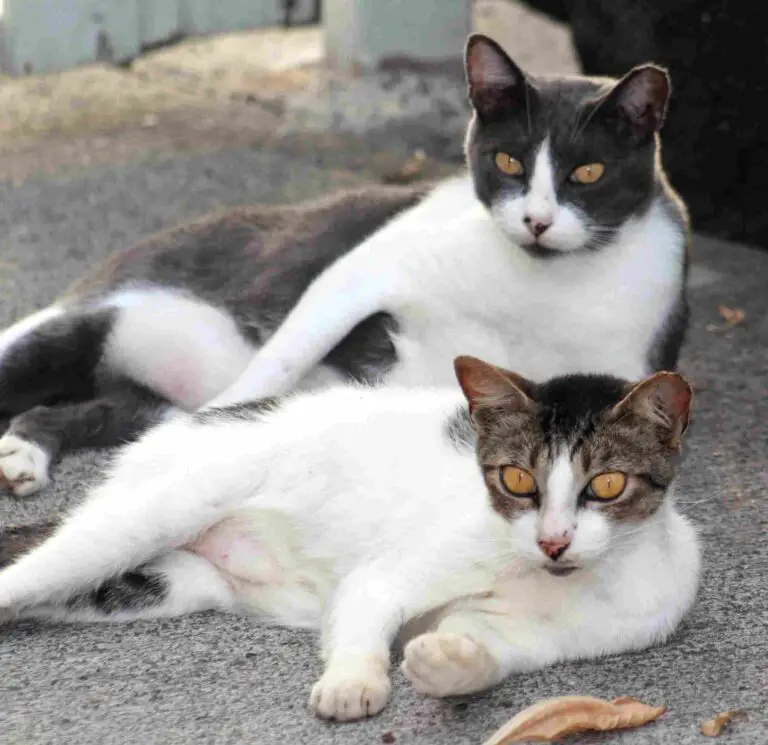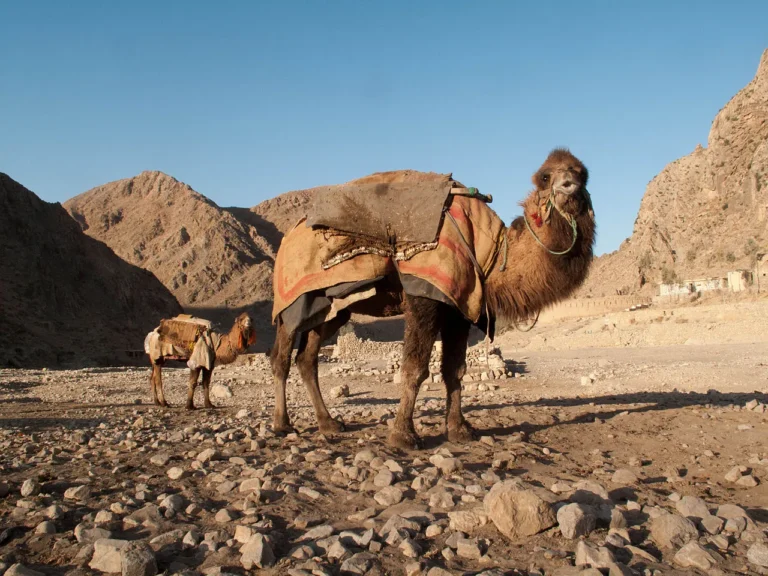7+ Carnivores in The Congo Rainforest Ecosystem Discussed
Carnivores in the Congo rainforest are a diverse array of predators, each adapted to thrive in the dense vegetation and complex terrain of this vibrant ecosystem. They include the elusive leopard, the striking African golden cat, the graceful black-winged kite, the unique African harrier-hawk, the majestic Congo serpent eagle, various species of owls, predatory frogs, the venomous Gaboon viper, and the formidable African rock python. These carnivores play essential roles in regulating prey populations, maintaining biodiversity, and shaping the intricate balance of the rainforest ecosystem.
1. Leopard
The leopard, known scientifically as Panthera pardus, stands as one of the apex predators in the Congo rainforest, boasting remarkable adaptability and stealth. Its distinctive golden coat, adorned with dark rosettes and spots, provides excellent camouflage amidst the dappled light filtering through the dense canopy. Renowned for its solitary and elusive nature, the leopard roams through the labyrinthine undergrowth with unmatched grace and agility.
Inhabiting various ecosystems within the rainforest, including dense jungles, savannas, and even mountainous regions, the leopard’s diet consists primarily of small to medium-sized mammals such as antelopes, monkeys, and rodents. However, it is not uncommon for them to opportunistically prey upon birds, reptiles, and occasionally larger prey such as young ungulates or even other carnivores.
Equipped with powerful jaws and retractable claws, the leopard is a formidable hunter, capable of ambushing its prey with remarkable precision. Its keen senses, including acute vision and hearing, further enhance its hunting prowess, enabling it to stalk and pounce upon unsuspecting prey with deadly accuracy. With a silent approach and lightning-fast reflexes, the leopard often delivers a fatal bite to the throat or suffocates its prey with a powerful grip.
Despite its prowess as a hunter, the leopard faces numerous threats within its habitat, including habitat loss, poaching, and human-wildlife conflict. Conservation efforts are crucial to safeguarding the future of these majestic carnivores in the Congo rainforest, ensuring their continued presence as vital components of this vibrant ecosystem.
2. African Golden Cat
The African golden cat (Caracal aurata) is a lesser-known but fascinating carnivore found in the Congo rainforest. With its striking golden fur and distinctive markings, this elusive feline prowls the dense undergrowth with remarkable stealth. Despite its name, the coat color of the African golden cat can vary from reddish-brown to grey, but it often displays a beautiful golden sheen in certain lighting conditions.
This medium-sized cat possesses a diverse diet, preying on a variety of small to medium-sized mammals, birds, and even insects. Its agility and quick reflexes make it an adept hunter, capable of navigating the tangled vegetation and ambushing prey with precision. While predominantly solitary, sightings of African golden cats with offspring suggest some level of maternal care and social interaction.
3. Black-Winged Kite
The black-winged kite (Elanus caeruleus) is a graceful raptor that patrols the skies above the Congo rainforest with elegance and precision. With its distinctive black shoulder patches contrasting against its predominantly white plumage, this aerial hunter is a sight to behold. Equipped with keen eyesight and exceptional aerial agility, the black-winged kite specializes in hunting small mammals, birds, and insects.
Using its keen vision to spot prey from above, the black-winged kite performs acrobatic aerial maneuvers to target and capture its quarry. Its hunting strategy often involves hovering in mid-air before plunging down to snatch its prey with sharp talons. Despite its relatively small size, the black-winged kite’s hunting prowess and adaptability make it a formidable predator in the Congo rainforest ecosystem.
4. African Harrier-Hawk
The African harrier-hawk (Polyboroides typus) is a distinctive bird of prey that navigates the dense canopy of the Congo rainforest with agility and finesse. With its unique facial disk and long, double-jointed legs, this adaptable raptor possesses a specialized hunting technique that sets it apart from other birds of prey. Known as “gaping,” the African harrier-hawk uses its slender legs to reach into tree crevices and extract prey such as small birds, rodents, and insects.
Despite its name, the African harrier-hawk is not closely related to true harriers but instead belongs to the family Accipitridae. Its ability to exploit a variety of prey sources, coupled with its distinctive hunting behavior, underscores its adaptability and success in the rainforest environment. With its sharp beak and powerful talons, the African harrier-hawk plays a crucial role in controlling populations of small mammals and birds within its habitat.
5. Congo Serpent Eagle
The Congo serpent eagle (Dryotriorchis spectabilis) is a majestic raptor that inhabits the lush canopies of the Congo rainforest. Named for its specialized diet of snakes, this eagle species possesses adaptations that enable it to hunt and subdue its serpentine prey with remarkable efficiency. With a wingspan of up to two meters, the Congo serpent eagle soars through the treetops, scanning for its elusive quarry.
Equipped with powerful talons and a sharp, hooked beak, the Congo serpent eagle is a formidable predator capable of tackling a variety of snake species, including venomous ones such as cobras and vipers. Its keen eyesight and agility allow it to maneuver through the dense foliage in pursuit of its prey, often engaging in dramatic mid-air battles with its serpentine adversaries.
6. Owl
Several species of owls inhabit the Congo rainforest, playing a vital role in the nocturnal ecosystem as efficient hunters of rodents, insects, and small birds. These enigmatic birds of prey, known for their silent flight and piercing gaze, are well adapted to the darkness of the forest understory. Species such as the African wood owl (Strix woodfordii) and the African barred owlet (Glaucidium capense) are among the owl species found in the Congo rainforest, each contributing to the delicate balance of predator-prey dynamics within the ecosystem.
7. Frog
While not traditionally considered carnivores, certain frog species in the Congo rainforest exhibit predatory behavior, feeding on a variety of invertebrates, small vertebrates, and even other frogs. These amphibians play a crucial role in controlling insect populations and contributing to the overall biodiversity of the rainforest ecosystem. Species such as the African giant bullfrog (Pyxicephalus adspersus) and the Congo clawed frog (Xenopus fraseri) are among the frog species found in the region, each adapted to a specific niche within the complex web of life in the Congo rainforest.
8. Gaboon Viper
The Gaboon viper (Bitis gabonica) is a highly venomous snake that resides within the understory of the Congo rainforest, concealed among the leaf litter and vegetation. Renowned for its striking appearance, characterized by intricate patterns and a broad, triangular head, the Gaboon viper is a master of camouflage, blending seamlessly into its surroundings. Despite its relatively sluggish demeanor, this ambush predator possesses one of the longest fangs of any venomous snake, capable of delivering a potent cocktail of venom to its prey.
Preying primarily on small mammals, birds, and amphibians, the Gaboon viper employs a sit-and-wait strategy, relying on its cryptic coloration to remain undetected until an unsuspecting victim draws near. With lightning-fast reflexes, it strikes with precision, injecting its prey with venom before swallowing it whole. While encounters with humans are rare due to its elusive nature, the Gaboon viper’s potent venom underscores the importance of respecting the diverse wildlife inhabiting the Congo rainforest.
9. African Rock Python
The African rock python (Python sebae) is one of the largest snake species in the world, thriving in the diverse habitats of the Congo rainforest. With its impressive size, muscular build, and distinctive patterning, the African rock python commands respect as a formidable predator within its ecosystem. While primarily terrestrial, this constrictor is also capable of climbing trees and swimming, allowing it to exploit a wide range of prey.
Preying on a variety of mammals, birds, and reptiles, including antelopes, monkeys, and crocodiles, the African rock python employs ambush tactics to capture its quarry. Using its powerful coils to constrict and suffocate its prey, it delivers a swift and efficient death before consuming its meal whole. Despite its role as a top predator, the African rock python faces threats from habitat loss, human persecution, and the exotic pet trade, highlighting the importance of conservation efforts to ensure its survival in the Congo rainforest.
*Summary
-
Leopard:
-
Solitary and elusive predator with remarkable adaptability.
-
Hunts small to medium-sized mammals and occasionally larger prey.
-
Renowned for stealth, agility, and powerful hunting techniques.
-
-
African Golden Cat:
-
Elusive feline with striking golden fur.
-
Hunts small to medium-sized mammals, birds, and insects.
-
Displays agility and quick reflexes in dense undergrowth.
-
-
Black-Winged Kite:
-
Graceful raptor with distinctive black shoulder patches.
-
Specializes in hunting small mammals, birds, and insects.
-
Performs acrobatic aerial maneuvers to capture prey.
-
-
African Harrier-Hawk:
-
Unique bird of prey with specialized hunting technique called “gaping.”
-
Extracts prey from tree crevices using slender legs.
-
Plays a crucial role in controlling small mammal and bird populations.
-
-
Congo Serpent Eagle:
-
Majestic raptor specializing in hunting snakes.
-
Equipped with powerful talons and sharp beak for subduing prey.
-
Soars through the canopy, engaging in mid-air battles with serpents.
-
-
Owl:
-
Nocturnal hunters contributing to the ecosystem’s balance.
-
Prey on rodents, insects, and small birds.
-
Adapted to the darkness of the forest understory.
-
-
Frog:
-
Predatory amphibians controlling insect populations.
-
Feed on invertebrates, small vertebrates, and other frogs.
-
Play a vital role in rainforest biodiversity.
-
-
Gaboon Viper:
-
Highly venomous snake with striking appearance.
-
Ambush predator preying on small mammals, birds, and amphibians.
-
Relies on camouflage and potent venom for hunting.
-
-
African Rock Python:
-
Large constrictor capable of climbing and swimming.
-
Hunts a variety of prey including mammals, birds, and reptiles.
-
Relies on ambush tactics and powerful coils for subduing prey.
-
| Carnivore | Summary |
| Leopard |
Solitary and elusive predator; hunts small to medium-sized mammals with stealth and agility.
|
| African Golden Cat |
Elusive feline with striking golden fur; hunts small to medium-sized mammals, birds, and insects in dense undergrowth.
|
| Black-Winged Kite |
Graceful raptor specializing in hunting small mammals, birds, and insects; performs acrobatic aerial maneuvers for prey capture.
|
| African Harrier-Hawk |
Unique bird of prey with specialized hunting technique called “gaping”; extracts prey from tree crevices using slender legs.
|
| Congo Serpent Eagle |
Majestic raptor specializing in hunting snakes; equipped with powerful talons and sharp beak for subduing prey in mid-air battles.
|
| Owl |
Nocturnal hunters preying on rodents, insects, and small birds; adapted to darkness of the forest understory.
|
| Frog |
Predatory amphibians controlling insect populations; feed on invertebrates, small vertebrates, and other frogs; vital for rainforest biodiversity.
|
| Gaboon Viper |
Highly venomous snake relying on camouflage and potent venom for ambushing small mammals, birds, and amphibians.
|
| African Rock Python |
Large constrictor capable of climbing and swimming; hunts a variety of prey including mammals, birds, and reptiles using ambush tactics and powerful coils.
|
FAQs about Carnivores in the Congo Rainforest:
-
Q: Are all carnivores in the Congo rainforest predators?
-
A: While many carnivores are predators, some may scavenge or opportunistically feed on carrion as well.
-
-
Q: What is the role of carnivores in the Congo rainforest ecosystem?
-
A: Carnivores play a crucial role in regulating prey populations, maintaining biodiversity, and influencing the structure of the ecosystem through predation and scavenging.
-
-
Q: How do carnivores adapt to life in the Congo rainforest?
-
A: Carnivores in the Congo rainforest have evolved various adaptations such as camouflage, keen senses, and specialized hunting techniques to thrive in the dense vegetation and complex terrain.
-
-
Q: What are the conservation challenges facing carnivores in the Congo rainforest?
-
A: Carnivores in the Congo rainforest face threats from habitat loss, poaching, human-wildlife conflict, and the illegal wildlife trade, highlighting the need for conservation efforts to protect these species and their habitats.
-
-
Q: How can I observe carnivores safely in the Congo rainforest?
-
A: While it can be challenging to observe carnivores in their natural habitat, guided wildlife tours led by experienced professionals offer opportunities to safely observe these fascinating predators from a respectful distance.
-
